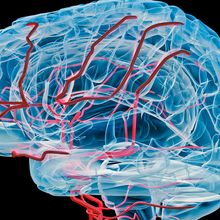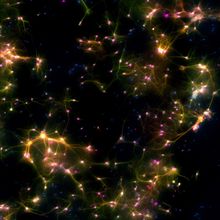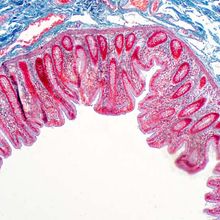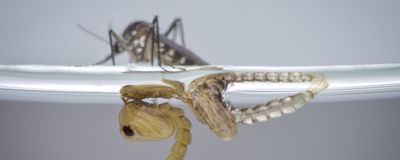Login
Subscribein vitro

Our Favorite Neuroscience Stories of 2022
Dan Robitzski | Dec 28, 2022 | 4 min read
This year, neuroscience researchers made important discoveries related to how neurodegeneration attacks the human brain, hooked cultured neurons up to machinery to teach them to play a video game, and more.

ApoA1 Identified as a Novel Target for ALS Therapy
Jennifer Zieba, PhD | Dec 12, 2022 | 3 min read
Researchers found that the ApoA1 protein can restore ALS epithelial cell survival in vitro.

A Sticky Situation: Optimizing Cell Culture with Essential Extracellular Matrix Proteins
The Scientist’s Creative Services Team and MilliporeSigma | 3 min read
Pre-mixed attachment factors provide a robust solution to streamlining cell culture workflows.

How Neurons in a Dish Learned to Play “Pong”
Dan Robitzski | Oct 12, 2022 | 5 min read
The DishBrain system can send and receive electrophysiological signals to and from living neurons, training the cells to accomplish a task.

Rat Sperm Generated from Stem Cells
Alejandra Manjarrez, PhD | Apr 7, 2022 | 4 min read
Researchers report they were able to make functional sperm in a dish, a feat previously only possible for mice.

Versatile and Sustainable: Cell Counting for the 21st Century
The Scientist’s Creative Services Team and DeNovix Inc. | 3 min read
Discover how the latest cell counting technology is reshaping a mundane task for the future.

Engineered Stem Cells Grant Geckos “Perfectly” Regenerated Tails
Chloe Tenn | Nov 5, 2021 | 4 min read
Geckos injected with neural stem cells modified to block cartilage growth developed the skeletal and nervous components normally lacking from regrown tails.

New Report Dissects Ethics of Emerging Human Brain Cell Models
Amanda Heidt | Apr 12, 2021 | 5 min read
The National Academies’ report touches on ethical issues raised by new technologies such as brain organoids and human-animal chimeras, and suggests that current regulatory oversight is sufficient.

Mini-Guts to the Rescue: Introducing 3-D Organoid Cell Cultures
The Scientist’s Creative Services Team and MilliporeSigma | 2 min read
A cost-effective 3-D organoid biobank provides a versatile translational research tool.

Tumor Organoids Hold Promise for Personalizing Cancer Therapy
Jef Akst | Jul 15, 2019 | 4 min read
The three-dimensional cell cultures are still in the development phase, but researchers are excited about their use to predict patients’ responses to various treatment options.

Blood Vessels Grown in a Petri Dish Closely Resemble Human Ones
Catherine Offord | Jan 18, 2019 | 2 min read
The lab-made organoids are fully functional, the team reports, and could aid the study of vascular-related diseases such as diabetes.

An Optimized Culture Medium for Induced Pluripotent Stem Cells
The Scientist Creative Services Team in collaboration with Bio-Techne | 2 min read
An animal component-free culture medium provides a safe and robust alternative for maintaining induced pluripotent stem cells.

New Technique Limits CRISPR-Cas9 Off-Target Mutations
Abby Olena, PhD | Sep 12, 2018 | 3 min read
A mouse study details a method called VIVO that predicts the accuracy of any guide RNA.

Researchers Develop a Drug Against the Common Cold
Catherine Offord | May 15, 2018 | 2 min read
In an in vitro study, the compound completely blocked the replication of rhinoviruses.

Colorblindness Study Reveals Unexpected Way to Make Blood Vessels
Ashley Yeager | May 1, 2018 | 3 min read
Researchers stumbled across the connection while searching for ways to reduce vision problems in people with achromatopsia.

Image of the Day: Everybody Vomits
The Scientist Staff | Aug 31, 2017 | 1 min read
In a process known as vomocytosis, macrophages swallow pathogens whole only to spew them back out later, unharmed.

Chloroquine Protects Against Zika In Vitro
Marcia Triunfol | May 12, 2016 | 3 min read
The antimalarial drug reduces the number of infected Vero and human brain microvascular endothelial cells—among other cell types—in culture, researchers report in a preprint.

Next Generation: Toward Synthetic Neural Tissue
Catherine Offord | Apr 1, 2016 | 3 min read
Scientists produce a tissue-like material containing hundreds of light-activated compartments that transmits an electrical signal when illuminated.

Antidepressant Exerts Epigenetic Changes
Anna Azvolinsky | Nov 25, 2015 | 3 min read
Molecular markers could aid researchers’ assessment of patient response to the drug.
